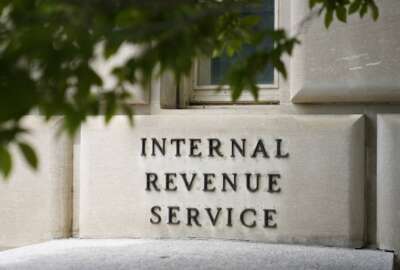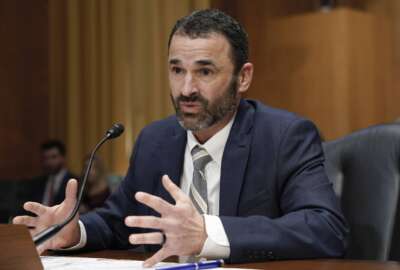How the pandemic changed IRS technology for good
Former IRS CIO Nancy Sieger, who will retire on June 1 after more than 40 years in government, said she found success during the pandemic by managing its risks.
Through the pandemic, the IRS learned it can move with urgency. And now that the emergency has subsided, Nancy Sieger, the former IRS chief information officer, believes that lesson isn’t going to waste.

Sieger, who will retire on June 1 after more than 40 years of federal service, including the last one as the Treasury chief technology officer, said IRS is building on the IT modernization lessons learned over the past few years.
“I think technologists saved the day during the pandemic. As the IRS CIO, I had the opportunity to lead IRS efforts to ensure that services to the public were handled in the most efficient way possible. If you think back to that time, businesses shut down, cities were practically shut down, and our economy was suffering and human beings were suffering. IRS focused really hard to issue three rounds of Economic Impact Payments. I am most proud of how IRS leadership and employees rallied to get money to the people in this country who needed it the most,” Sieger said during an “exit” interview on Ask the CIO. “We had a principle that any new technology would be built in a modernized way. We were really good at relying on the older systems and delivering fast. One of the opportunities we had with the Economic Impact Payments, looking to the future, feeling like IRS might be called upon again to do something similar. We had to challenge ourselves to say that may be easy and fast to build upon old operations, but how do we do this in a modernized way so that it’s repeatable? There were three rounds of payments, each round of payments came faster and faster, culminating within 24 hours. The Economic Impact Payments and that processing were built using new tools, new testing methods, new quality assurance processes and built in a modernized way. If IRS has to do that again, the strong foundation will be there.”
Sieger said it took constant reminders to build the confidence of the developers and engineers to the point where she and then-IRS Deputy CIO Kaschit Pandya, who is now the agency’s CTO, met daily with the technology workers who were writing code and analyzing it.
“We often had to say to our folks, ‘no, no, you have my permission to do it this way. Not [the old] way. It was risky. We managed those risks,” she said. “But ultimately, it resulted in little-to-no rework. I would say to you, on behalf of Kaschit and myself, the hours we spent with a team doing this the way it needed to be done was very fulfilling.”
IRS can accept, manage risks
That experience has helped the IRS continue to launch modern services, such as the direct file application, launched in March across 12 states. The IRS said the direct file pilot helped more than 140,000 citizens file their taxes online and for free.
There are plenty more opportunities for the technology development lessons learned from the pandemic to continue to spread across the IRS. Commissioner Danny Werfel told lawmakers in April that the tax agency needs $104 billion for a multi-year modernization effort.
Sieger said the experience over the last three-plus years taught the IRS it can accept and manage risks differently than before.
“We took a lot of risks. We weighed those risks. We said, ‘the worst thing that could happen is this. What are we going to do when that happens?’” she said. “I think our greatest opportunity is not forgetting how we did that, and bringing that forward into future operations. I’m trying not to say don’t be risk averse, but I’m going to say it. Don’t be risk averse and accept measured risk; know what could happen, know how you’ll adapt, but let’s face it, in our personal lives, especially in the technology space, how many of us get an update on our smartphone that didn’t work. But we know the next day it will be updated and fixed. Now I am not suggesting something so aggressive in government. But I am suggesting that we look back to how the government served this country during the pandemic and bring some of those skills and learnings forward to be even more effective and efficient in government service.”
One of the biggest reasons for the IRS’ success, beyond the urgency of the moment, was the top-cover leaders gave the developers. Sieger said helping employees reduce the fear of failure and ensuring they know they are not going to be left behind should something go wrong was a huge factor in the agency’s success.
“At the time, it was Commissioner Charles Rettig who was constantly keeping his hand on the pulse of the employees, working with Treasury to ensure that we were delivering the payments and processing tax returns and the IT workforce knew they had support. They were constantly asked, ‘What do you need?’ Sometimes they would tell us what they needed. Sometimes, I saw what they needed, and they wouldn’t ask. There was a particular weekend where the team was working really hard,” she said. “This was not a case of the workforce being hesitant to do new things. This was a case of the workforce having the skills they needed to do this in the most elegant way, and once leadership let them know — from Commissioner Rettig through the different deputy commissioners to myself and all the front line executives at the IRS who helped them — they were able to get things done and help the country. It was an example of coming together at the right time in the right way for the right outcome.”
Copyright © 2024 Federal News Network. All rights reserved. This website is not intended for users located within the European Economic Area.
Jason Miller is executive editor of Federal News Network and directs news coverage on the people, policy and programs of the federal government.
Follow @jmillerWFED







